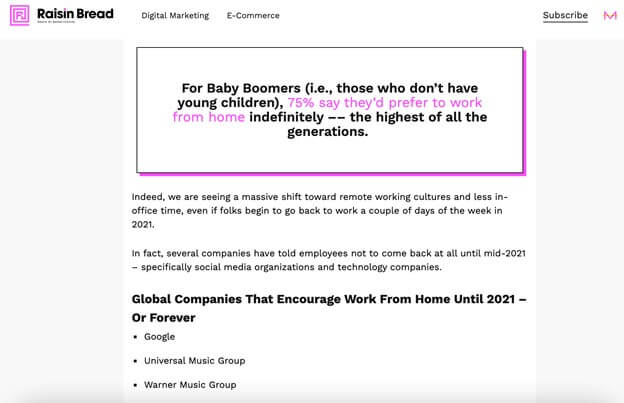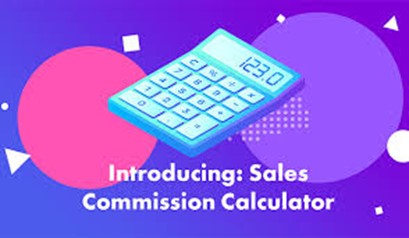Would you believe me if I told you that 96% of the people who visit your website are not prepared to buy anything yet?
That means most of your visitors need to be ‘nurtured’ in some way or another before they turn into customers.
However, getting consistent website traffic is only half the battle. You need to have a strong strategy in place if you want to move your visitors further along the funnel.
This is why you have to focus on demand generation.
Demand generation creates the urge to learn more about your business. It also includes any activity that helps drive awareness or interest in your product or service.
Now we’re going to talk about demand generation, how it differs from lead generation, and how marketing automation can help you in demand generation.
What is Demand Generation?
Demand generation means creating a desire in your target audience to know more about your product or service. It generally begins by creating awareness about a specific problem your target audience is facing and then presenting your product as the solution.
Demand generation does not mean forcing your customers to buy your product or telling them that yours is the only solution that can get rid of the problem they’re facing.
Instead, the goal of demand generation is to instill a desire in your ideal audience to:
- Learn more about your product through your website
- Follow your brand on social media
- Sign up for welcome emails to receive more information
- Sign up for a free trial of your product or service
In doing so, you will be able to capture their information and send them more details about your products and progress them through the buyer’s journey.
Marketing Strategies for Demand Generation and Automation
So we know marketing automation is great for demand generation. But how do you use it to boost your business while managing complex projects at the same time?
Here are some marketing strategies you can use to help your business’ demand generation:
1. Create and Share High-Quality Content
70% of marketers invest in content marketing.
Blog posts are typically one of the first touch-points on the customer journey. A potential customer searches for something on Google, finds your article, then what do they do?
Basically, you need to learn how to start a successful blog and then capture as much lead data as you can into an automated sales funnel.
The first step in building brand awareness and getting top of funnel traffic is to launch and maintain a blog.
Create long-form pieces of content that educate your target audience about their problem and introduce them to possible solutions.
For example, MarketerHire, a company that matches freelance marketers to employers, does this well in their guide to remote work:
 Image source
Image source
This is an excellent way to build brand awareness while educating and nurturing your audience.
Just don’t forget to do targeted keyword research and create in-depth articles that match search intent.
One of my favorite examples of this is this ultimate guide to contract management from Pandadoc:
Image Source
Scrolling through it, you will quickly notice that it’s both keyword targeted and high-quality. They go in-depth to create long-form content on their subject matter and target audience, as you should too.
Comparative content is a great way to show your audience the different brands that are offering solutions so that they can make an informed choice. And you can position your own product as the best choice.
Creating a guest posting system is another effective demand generation method. It helps spread the word about your business on other websites and can help you generate valuable backlinks to help your own content rank better on search engines.
Don’t fret if you don’t have the bandwidth or capacity to produce such content, as there’s always sites like Upwork or Fiverr that you can outsource to quality freelancers.
A great way to stand out from traditional blogging is by creating other forms of content such as podcasts. Podcasts are gaining in popularity and are easy to create and promote. With podcasts as a new demand gen and brand awareness tactic, you can funnel more traffic from your podcast to your blog and other landing pages to capture leads.
If interested in learning how to use podcasts as your next lead gen tool, be sure to check out this guide on starting a podcast by choosing a podcast hosting provider.
2. Create Free Tools and Resources
Offering a useful tool or resource for free can help build trust among your target audience. It can also make your potential customers aware that you have a particular product that can help them through a problem they are facing.
This is excellent news for you if you plan to have a free SaaS tool as part of your demand generation strategy. Free tools or trials can give your target audience a taste of your paid products and get them excited about them.
However, if you’re hesitant to give a free trial, you might want to try another useful, but relevant tool.
Another great example of such tool is this sales commission calculator from Reply:
 Image Source
Image Source
Since Reply is a multichannel sales engagement platform, a sales commission calculator is a useful tool for its audience. The tool shows that Reply is willing to give away a practical and handy tool for free, thus gaining trust from its potential customers.
3. Capture Lead Data
One fantastic aspect of demand generation is…well..generating more demand.
So, what do you do once you’ve built up this demand? Start capturing those leads and funneling them into your sales pipeline!
There are many different ways to accomplish this, but I prefer two in particular:
Forms and live chat.
For example, you can use custom forms and agreement templates that will help you collect information from your potential leads.
You can also use one of the top website builders to customize your web pages, mobile forms, pop-ups, and more.
Just take a look at this example from GetVoIP’s post explaining outbound IVR for marketing, this form pops up as a user goes to exit the page:
Image Source 
That is just one of the brilliant ways you can capture lead data.
In addition, incorporating live chat can be a game-changer for conversions and automating your funnel.
Live chat applications on your website are a super-efficient way to contact your potential customers in real-time.
The numbers don’t lie. 38% of customers are more likely to buy something from a company that offers live chat support.
Live chat helps you drive revenue and customer loyalty for your business. It not only offers customers a seamless experience while they’re on your website but also allows you to collect essential data from them.
4. Incorporate Online Quizzes
A quiz is useful in getting details from potential customers who may be interested in your business. Although people won’t be ready to buy from you at this stage. You can use fun quizzes to get contact details from them and lead them into a campaign.
For instance, you can capture the email address of those wanting to take the quiz and funnel them into your email list, where you can send relevant content to them periodically.
You can also easily segment your list with a quiz. Use the results of the quiz to send each lead into a funnel that leads them to more information about products they may be interested in.
Quizzes are easily shareable, which means you can enable social sharing. Your audience can instantly share a fun quiz they just found with their friends and family, and this helps you generate demand for your business in the process.
5. Invest in Email Automation
79% of B2B marketers consider email to be the most effective distribution channel.
In fact, there were 306.4 billion emails sent and received in 2020, and the number will only continue to rise.
It’s a no-brainer that email automation should be a part of your demand generation strategy, especially when you want to nurture your audience and convert them into buyers.
Once you have built demand, you can use an email tool and schedule automation in your funnel.
6. Find Influencers to Increase Demand
89% of marketers say that the ROI (Return on Investment) from influencer marketing is as good as or sometimes even better than other marketing channels.
Image Source
Influencers are people who have built an audience for themselves by gaining their trust. Influencers in your niche already have the potential to reach out to a massive chunk of your target audience, making them an asset to your business.
Reach out to top influencers using email outreach in your niche in a meaningful way so that you can build a successful relationship with them. A great way to find these people would be through social media.
Once you have their attention, find creative ways to collaborate with them in such a way that is beneficial to both parties. Luckily, there are plenty of collaboration tools that make this seamless.
This will help boost your business’ demand generation through word of mouth marketing and bring more awareness to your brand.
How Marketing Automation Helps Agencies in Demand Generation
Now that you have a clear idea about what demand generation is, let’s talk about how you can use marketing automation as a tool to help your agency with demand generation.
As an agency, your company may be providing services to different businesses.
Marketing automation helps you simplify business tasks so that you can focus on the results. Do not treat it as a set-it-and-forget-it tool, but instead must be used to analyze results in your database platform and improve your strategies.
Marketing automation helps you save time and resources, improve client retention, and increase revenue.
Conclusion
Your website traffic may not be an accurate indicator of your potential revenue. Demand generation is crucial to growing your business.
Demand generation means to develop a desire in your target customer to learn more about your product or business. Once your customers realize that they have a need, they will be more willing to consider the solutions that you are offering them.
Marketing automation is a powerful tool that helps you strategize demand generation, save time, analyze results, and further improve your strategy.
There are many marketing automation tools you can use depending on the type of business you run and your target audience. Automating content distribution, collection of data from potential leads, and other business-related tasks will help you improve demand generation and scale your business.
Dustin Howes owns an affiliate marketing agency that is dedicated to helping companies maximize their affiliate marketing efforts. Through group coaching and private consulting, Dustin teaches program managers how to recruit the right affiliates, optimize working hours, and how to take the growth of the program to the next level. Learn more affiliate marketing tips at dustinhowes.com.
Demand generation stock photo by StockLite/Shutterstock







